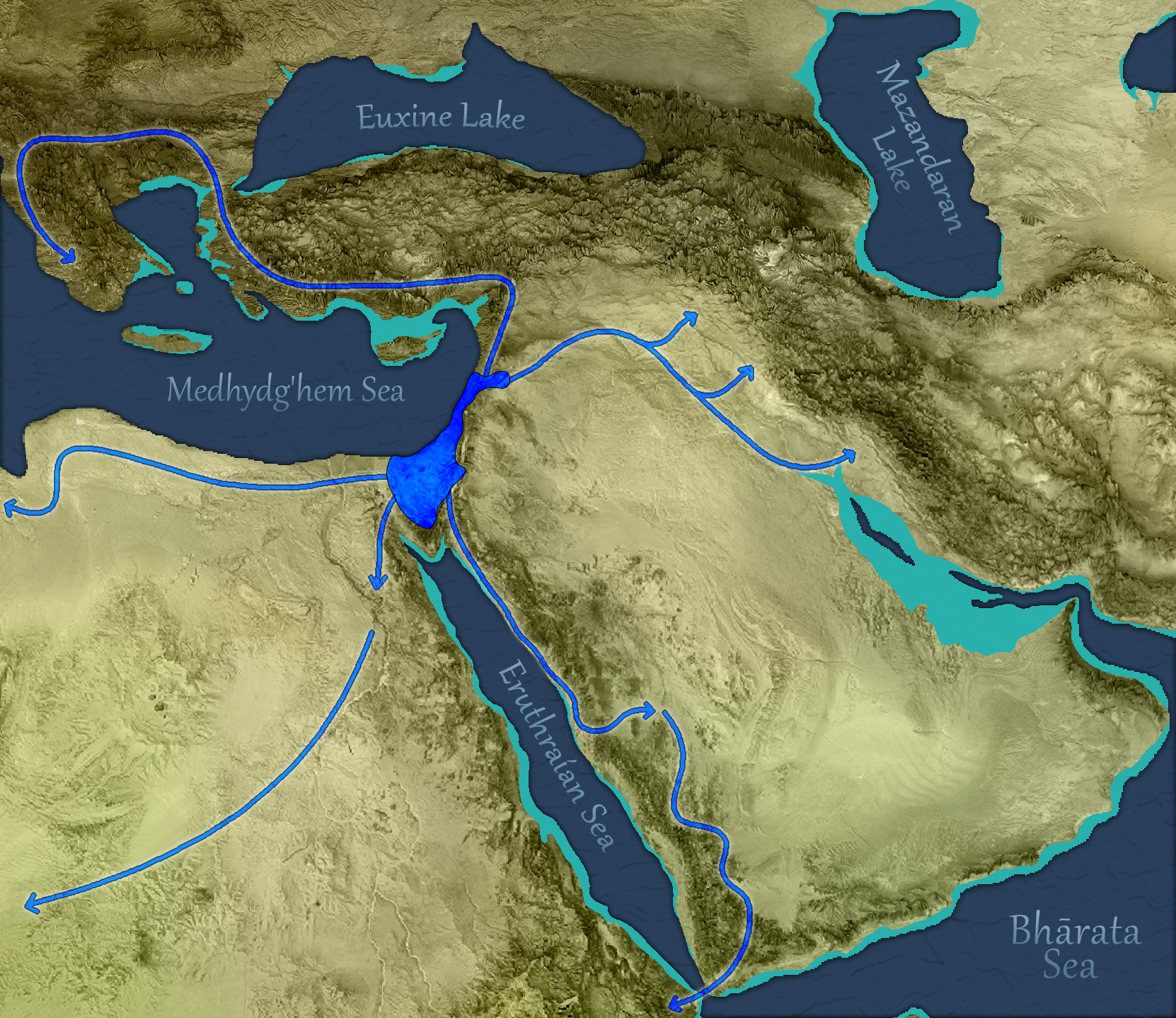Pūraw
Pūraw is one of the five original shared human languages.1 It emerged in the Levant in 12,900 BP and had been entirely phased out and replaced by successors by 9,000 BP.
Origin
The Natufans were hunter-gatherers, but the warm and resource-rich environment along the coastline in the Levant during the Chormosian Turning allowed them to give up their nomadic lifestyle. They built permanent shelters near the water that they could return to after hunting trips. This new sedentary lifestyle emerged gradually during the 14th Millennium BP. Having consistent places of residence led to continuous and consistent communication among neighboring families. This led to a standardization of communication over time, resulting in the Pūraw language.Development
Pūraw remained a regional language in the Levant throughout the Paukos Eisom. Rapid warming in the early centuries of the Polwes Pleudō led to a population explosion among the Natufans and increased exploration, as well as populations in Europe moving southward into regions such as Birit Narim and the Levant.3 In 9,500 BP a Natufan clan in northern Levant joined up with some Zarzian explorers who followed the coastline northward and westward, through Anadolu and settling in Cycladia to establish Pelasgian culture. The pidgin they created from the mix of Pūraw with Lipī, the language of the Zarzians, gave rise to the Pelasgian language Kapte.Extinction
Meanwhile, back in the Levant, the increased trade and interaction with other cultures caused Natufan culture to evolve, making the transition to Mureybetian culture. One element of this transition was a simplification of Pūraw to make it easier for travellers to learn, and the adoption of trade-related loan words, so that by 9,000 BP or so Pūraw had evolved into its successor language Karā'um.
Source Region
Source Culture
Natufan People
Spoken by
Used From
12,900 BP
Used Until
9,000 BP
Writing System(s)
none2
1. A "shared" language is a language that is used by a population larger than one or two extended family clans. Shared languages began to arise among groups of human clans that were sedentary or semi-nomadic, and in settings that incentivized cooperation. This created incentive for the simplification and standardization of communication across larger populations. Five shared languages emerged independently among humans at different times and in different regions. These five original shared languages, in order of appearance, were:
- Kx’wi (22,350 BP - 18,950 BP)
- Vadana Lipī (14,500 BP - 8,000 BP)
- Pūraw (12,900 - 9,000 BP)
- Yék (10,510 BP - 4,550 BP)
- Yányǔ (9,900 BP - 4,950 BP)



